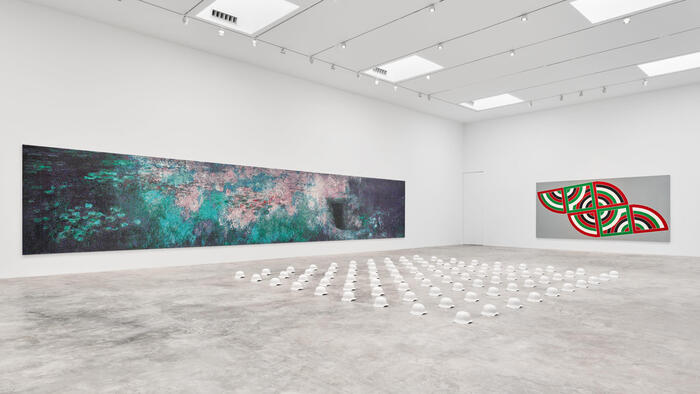After eight years, New York City once again hosts Chinese artist, designer and activist Ai Weiwei for an exhibition titled What You See is What You See, that showcases 12 works made with Lego bricks. The show focuses on issues concerning freedom of expression and the geopolitical conflicts of our time. The Big Apple welcomed the artist between 1981 and 1993, during the 12 years crucial to his career in which he developed his vision of art as a tool for resistance and awareness of the reality around us.
The title of the exhibition, which opened Oct. 24 and runs through Feb. 23, 2025, is inspired by a famous phrase by U.S. minimalist artist Frank Stella, who died in May this year, and will be organized by Faurschou, a private Danish museum that opened an outpost in Brooklyn in 2019.

In particular, the works created by the artist that will not be made available for sale focus on the tragic reality of Palestine, the issue of abortion, climate, artificial intelligence, technology, and that of refugees. Many of these are deliberate “appropriations” of well-known art history masterpieces such as Leonardo Da Vinci’s Last Supper and Giorgione’s Sleeping Venus. There is also a work inspired by the art of Frank Stella and the geometries of the work Harran II, exhibited at the Guggenheim, taken up for the occasion, with the pattern and colors of the Palestinian flag. In the evocation of Dresden’s Sleeping Venus, Weiwei enhances the theme and drama of clandestine abortions. After The Death of Marat, evokes the memory of the little Syrian refugee Alan Kurdi who died on the beach of the island of Lesbos; this is juxtaposed with Jean Louis David’s iconic 1793 painting, The Death of Marat.
The Legos from which the works are made represent the pixels that form the digital images that surround everyone’s daily lives, especially through the use of smartphones. Through the choice of this evocative technique, the artist’s specific intent is also to raise questions about technology-related creativity, accessibility and the issue of replicability of images in the digital age.
As stated on the exhibition’s official website, the artist says about his work, “We do not know what the future holds. Based on our current experiences, regardless of whether they seem prophetic or wise, it is very difficult to determine how to respond to today’s realities or anticipate tomorrow’s events. Therefore, my most sincere advice is not to believe too firmly in anything.”











